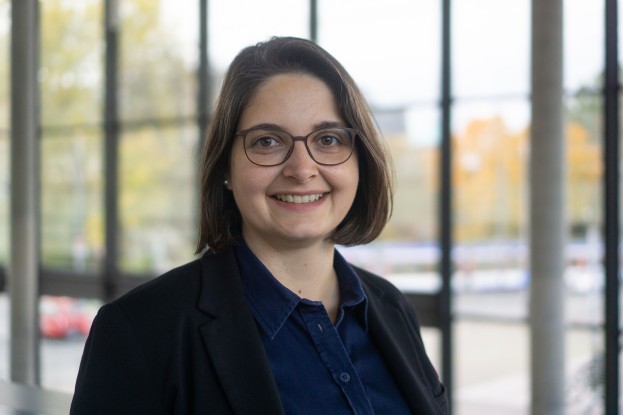Molecular simulation of the droplet wetting on hydrophobic surfaces
Understanding the wetting process of a droplet on a solid surface is especially helpful since it is widely applicable in various fields. For instance, in the inkjet printing process, the ink droplets should be deposited where they are expected to be. If the ink droplet rebounds after impacting the paper (a solid surface) and is eventually located somewhere unexpected, the quality of the printing might not be satisfactory.[1] The wetting process is influenced by multiple parameters, including surface tension, liquid viscosity and impact velocity. Dimensionless Reynolds and Weber numbers given as a ratio of these parameters explain the wetting behavior.[2] However, such classical explanations lack a consideration of surface roughness, which is not only critical to superhydrophobicity but also indispensable in natural solid surfaces, thus its effect to the wetting process needs to be understood.
Molecular simulation study has advantages of studying the wetting as it provides an explicit view of the process in a molecular level and enables a wider parameters space compared to experiments. For example, the degree of wetting can be varied simply by adjusting the solid-liquid interaction parameter in the simulation, while in a laboratory it could be done by changing the substrate (surface) or the droplet.[3] In this work, we use Multi-body Dissipative Particle Dynamic (MDPD), which is a useful tool to investigate details of the wetting process. You will learn the background knowledge of droplet wetting (dynamic & static) on hydrophobic surfaces and MDPD simulation. Then you will conduct simulations of static and dynamic wetting process of droplet on hydrophobic surfaces under various surface and impact conditions. You will also learn how to interpret the droplet behavior during the wetting process and the underlying mechanism by analyzing essential parameters that characterize the impact process, such as dynamic contact angle, spreading factor, contact line velocity and the contact line friction coefficient. You will also compare the results of to those from the Molecular Kinetic Theory (MKT).[3]
This Project is supervised by Prof. Dr. Florian Müller-Plathe and Dejian Qiu (M.Sc.).
Additional Information
| Capacity | One IREP Student |
| Project available for | Summer 2024 |
| Credits | 18 ECTS |
| Available via Remote | No |



